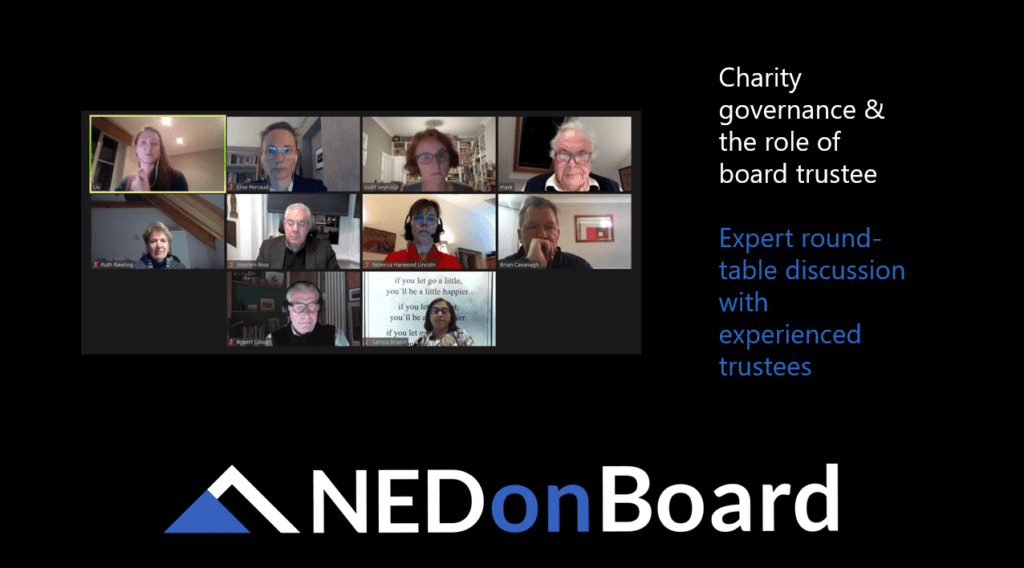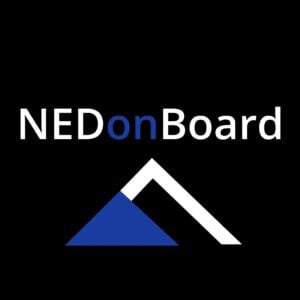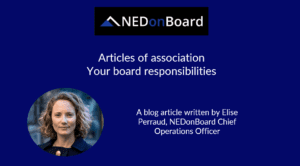Written by Elise Perraud, NEDonBoard COO
Being a charity trustee is exciting and rewarding. Many non-executive careers start with a role in the not-for-profit sector and most non-executive directors have a trustee role in their portfolio. This blog provides information to those wanting to transition successfully to a trustee role. It discusses the duties, liabilities, and responsibilities of trustees and identifies some trustee onboarding best practices. If you are looking to apply to a trustee role or have been recently appointed, this we encourage you to read this blog article.
The duties and liabilities of trustees
Key trustee’s duties include the following:
- Act in the charity’s best interests
- Act with integrity and disclose any conflict of interest
- Act with reasonable care and skill
- Not accept personal benefits
- Act within the parameters of the charity’s governing document
- Manage the charity’s resources responsibly
Trustees of charitable companies have additional statutory duties as they are company directors. They therefore need to be familiar with both company law and charity law requirements.
If charity trustees fail to meet their obligations and they have either acted dishonestly and/or unreasonably, they can be held personally liable. Trustees who have acted in good faith are very rarely prosecuted.
Related post: Differences and similarities between commercial NED and trustee roles
The responsibilities of trustees
Charity trustees are the people who have the general control and management of a charity’s administration: they have ultimate responsibility for the charity, hold management to account, oversee the performance and are the guardian of the mission. Charity trustees have a few names including governors, board members, directors, and members of the management committee.
The answers to three simple questions can help one understand the responsibilities of trustees and provide guidance when a role is accepted:
- What is the trustee here to do?
- What problem does the charity solve?
- What are the charity values?
Trustee onboarding best practices
As in any non-executive role, the induction process is important to ensure the effectiveness of the appointed professional. The trustee onboarding should focus on the role and its expectations, and the specificities of the charity. There are a few best practices to facilitate the process:
- Establish a buddy system between the new trustee and either a more experienced trustee, the chair of the board or a senior executive.
- Leverage the information made available by relevant charity regulators. The Charity Commission regulates and registers charities in England and Wales. The Scottish Charity Regulator is a non-ministerial department of the Scottish Government with responsibility for the regulation of charities in Scotland. The Charity Commission for Northern Ireland is the independent regulator of charities in Northern Ireland.
- Keep in mind the charity purpose and get involved with a project to fully understand the charity purpose and how this is delivered to beneficiaries on the ground.
- Review the charity governing documents.
As with other non-executive director role, ongoing professional development is critical to remain relevant and be effective.
Related posts: Understanding the role of the charity trustee (part 1); Understanding the role of the charity trustee (part 2)
If you are looking to become a board trustee, you may be interested in the support delivered by NEDonBoard in the NED Accelerator® Programme or our Joining a Not-for-Profit board course.
Ongoing professional development of trustees is available through the NEDonBoard membership. If you are not a member, please visit our membership webpage.




